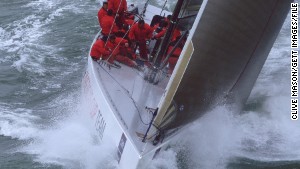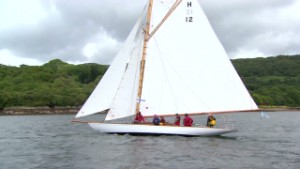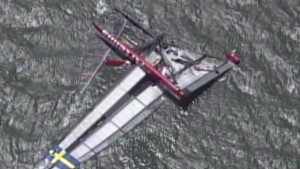
Voyage of a lifetime: Could you sail around the world?
By Sheena McKenzie
September 2, 2013 — Updated 1129 GMT (1929 HKT)
STORY HIGHLIGHTS
- Clipper Round the World Yacht Race kicks off in London
- Over 500 amateur sailors will face harshest conditions on the planet
- From three-meter waves to sweltering seas, do you have what it takes?
- Explore our interactive map to see what lies ahead for crews
Editor’s note: Scroll across the world to see Clipper route. Click on icons to learn more.
(CNN) — Could you survive on four hours sleep a day? What about coming face-to-face with waves the size of three-storey buildings? Or not seeing your loved ones for an entire year?
As the Clipper Round the World Yacht Race set sail from London on Sunday, 670 amateur sailors will soon find out if they have what it takes to complete one of the most grueling sporting challenges known to man — sailing around the globe.
Over the next year they will travel through the harshest conditions on the planet — facing everything from wild storms in the Southern Ocean, to frustratingly calm seas near the equator.
Read: The people who quit their jobs to sail around the world
 Meet America’s Cup flying hi-tech boats
Meet America’s Cup flying hi-tech boats
 103-year-old beauty’s film debut
103-year-old beauty’s film debut
 Looking back at America’s Cup tragedy
Looking back at America’s Cup tragedy
The 12 yachts, each measuring 21 meters, will visit 15 ports on all six continents. While some sailors will join for a month-long leg of the journey, others will quit their jobs and say goodbye to their family and friends for the full 11-month circumnavigation.
But despite the almost superhuman challenge ahead of them, many of the competitors had until recently never set sail in their life. From 18-year-old students to 70-year-old retirees, the gutsy sailors taking part in this year’s race will — quite literally — be thrown in the deep end.
“For most people it will be the first time they’re sleeping and living on a boat for a long period of time,” said Nik Brbora, who completed the 2012 race.
“They’ll have to get used to the uncomfortable conditions, lack of sleep, and shift work — usually four hours on, four hours off. Then there’s the weather — in all your training you can’t really experience your first big storm,” added the 29-year-old IT engineer from London.
Read: How to sail around the world for free
Founded in 1996 by Sir Robin Knox-Johnston — the first person to sail solo, non-stop, around the world in 1969 — the Clipper Race revolves around the notion anyone can circumnavigate the globe, regardless of their experience.
The only selection criteria is people must be over 18, pass a three-week sailing course and be physically fit enough to complete the epic voyage.
But at around £43,000 ($67,000) per person for a full year-long voyage, it’s not simply a huge physical undertaking, but a significant financial one.
Read: Wisdom from the sea: ‘React fast or be swept away’
“It’s a little bit like moving country — you have to say goodbye to everyone you know. All your possessions are broken down into one bag for an entire year,” said Brbora.
“The Clipper motto is that ‘anyone can do it.’ I was just an average guy working in the city, not a massive adventurer like Sir Robin Knox-Johnston. But I did it, and I’ve come out of it so much stronger and with so much more self-belief.”
‘;
document.write(OB_MarkUP);
if (typeof(OB_Script)!=’undefined’)
OutbrainStart();
else{
var OB_Script=true;
var str=”
‘;
document.write(OB_MarkUP);
if ( typeof(OB_Script)!=’undefined’ )
OutbrainStart();
else {
var OB_Script = true;
var str = “
Credit:
Interactive: Charting the perils of the sea
The post Interactive: Charting the perils of the sea appeared first on Arne Ruhnau News.
via Arne Ruhnau News http://arneruhnau.com/interactive-charting-the-perils-of-the-sea/
No comments:
Post a Comment